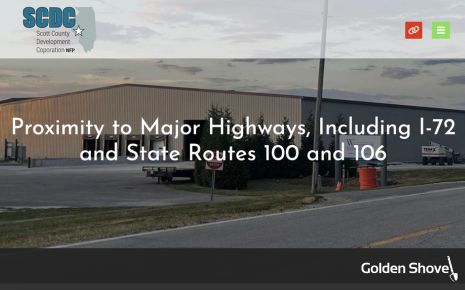Maximizing Tourism Impact: The Significance of Market Segmentation

1 Apr 2024
News, Tourism
In the dynamic world of tourism, understanding and catering to diverse traveler segments stands at the heart of destination success. The potential audiences for your destination are vast and varied, contingent on the unique attractions and experiences your location provides. For the purpose of this discussion, we’re choosing to hone in on targeting Millennials, senior citizens, and convention attendees, just to illustrate the broad scope of market segmentation strategies. It’s crucial to remember, however, that these groups represent only a snapshot of the wide-ranging audiences that can be targeted based on what your location has to offer.
Market segmentation, driven by comprehensive analysis and strategic insights, empowers tourism professionals to tailor their marketing strategies effectively. This article explores the importance of market segmentation in the tourism sector, showcasing how different tactics can effectively engage various demographics and highlighting essential tools and strategies for identifying your target audiences.
Understanding the Breadth of Market Segmentation
Market segmentation involves dividing a diverse market into distinct groups with similar characteristics, needs, and behaviors. For tourism professionals, this means recognizing that not all travelers are alike and adapting marketing strategies accordingly. According to Deloitte, 94 percent of destination marketing organizations (DMOs) believe that market segmentation is critical for success in today's competitive landscape.
Exploring Different Demographics
Millennials: Born between 1981 and 1996, Millennials are drawn to authentic experiences, adventure activities, and sustainability. Research from Expedia Group reveals that Millennials prioritize travel experiences over material possessions, with 72 percent of them preferring to spend money on experiences rather than material things. You can attract Millennials with experiential marketing, social media engagement, and curated travel packages tailored to their preferences. New Zealand's "100% Pure New Zealand" campaign showcases the country's natural beauty and adventure activities, resonating with Millennials seeking unique and sustainable travel experiences.
Senior Citizens: On the other end of the generational scale, individuals aged 65 and above, prioritize relaxation, cultural experiences, and accessibility in their travel choices. According to AARP, Baby Boomers spend over $120 billion annually on travel, making them a significant market segment for destinations. To cater to senior travelers, destinations can promote wellness retreats, heritage tours, and senior-friendly accommodations with amenities such as mobility aids and accessible facilities. The European Travel Commission promotes Europe as an ideal destination for senior travelers, highlighting its rich cultural heritage, scenic beauty, and accessibility features.
Convention attendees: This group represents a lucrative segment within the tourism industry, often seeking convenience, connectivity, and business amenities. The Events Industry Council reports that the business events sector contributes over $1 trillion annually to the global economy. To appeal to convention attendees, destinations can invest in state-of-the-art conference facilities, transportation infrastructure, and promotional campaigns highlighting accessibility and networking opportunities. Singapore's Marina Bay Sands integrated resort offers world-class convention facilities, luxurious accommodations, and diverse dining options, attracting business travelers from around the globe.
Beyond these specific groups, the tourism industry recognizes a plethora of target segmentations, each with its distinct needs and preferences, further illustrating the rich tapestry of potential travelers. Some other notable audiences include:
- Solo Travelers
- Family Travelers
- Eco-Tourist
- Luxury Travelers
- Adventure Seekers
- Cultural Enthusiasts
- Wellness Seekers
- Digital Nomads
- Culinary Tourists
- Religious Pilgrims
- Educational Tourists
- Historial Site Enthusiasts
- Wildlife and Safari Tourists
- Sports Enthusiasts
- Cruise Ship Passengers
- Backpackers
- Festival and Event Tourists
- Photography Travelers
- Honeymooners
- Agritourists
Each of these segments presents unique opportunities for destinations to diversify their appeal and marketing strategies, demonstrating the importance of a comprehensive approach to market segmentation in the tourism industry.
Tools and Strategies for Identifying Target Audiences
In today’s tourism landscape, understanding the vast array of traveler preferences necessitates a deep dive into the data and trends that illuminate who these travelers are and what they seek. The toolbox for achieving this is both rich and varied, providing crucial insights into crafting strategies that resonate across different segments.
Demographic Insights: The bedrock of targeting strategies involves analyzing data from a range of sources, including but not limited to census information, visitor surveys, and industry-specific research reports. The U.S. Travel Association's Travel Trends Index provides comprehensive insights into travel behavior and preferences across different demographic segments, enabling destinations to tailor their marketing strategies accordingly.
Behavioral Insights: Leverage data analytics and consumer behavior studies to understand travelers' motivations, preferences, and decision-making processes, allowing for the creation of personalized experiences and targeted marketing campaigns. Google Analytics offers robust tools for tracking website traffic, user engagement, and conversion rates, providing valuable insights into visitor behavior and preferences.
Asset and Attraction Analysis: Community assets mapping conducts a thorough assessment of destination assets, attractions, and unique selling points to identify opportunities for market differentiation and targeted promotion. DestinationNEXT's Community Assessment tool enables destinations to evaluate their competitive strengths and weaknesses, guiding strategic planning and development efforts.
Strategic Marketing in a Diverse Tourism Landscape
The challenge and opportunity in tourism marketing lie in the rich diversity of potential visitors. From Millennials seeking sustainable travel options to seniors looking for accessible cultural experiences, and a myriad of other unique traveler types, the potential for targeted engagement is endless. Recognizing this variety, the strategic application of demographic insights, behavioral analytics, and attraction analysis is critical. These tools not only illuminate the path to engaging with each segment effectively but also highlight the importance of versatility and innovation in marketing strategies.
Conclusion: Realizing the Potential of Marketing Segmentation
Market segmentation is a fundamental strategy for tourism professionals seeking to attract and engage diverse traveler segments effectively. By understanding the unique preferences and behaviors of a wide range of travel segments, destinations can tailor their marketing efforts to maximize engagement and drive destination growth. The use of analytic tools and strategic insights enables tourism professionals to unlock the full potential of market segmentation, ensuring sustained success in the competitive tourism marketplace.
More Topics


Breaking Down Barriers: The Critical Impact of Workforce Housing on Employment Prospects
Mar 27 2024


